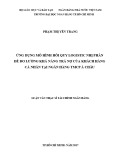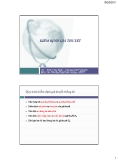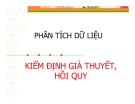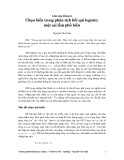
Tuan V. Nguyen
Senior Principal Research Fellow, Garvan Institute of Medical Research
Professor, UNSW School of Public Health and Community Medicine
Professor of Predictive Medicine, University of Technology Sydney
Adj. Professor of Epidemiology and Biostatistics,
School of Medicine Sydney, University of Notre Dame Australia
Phân tích dữ liệu và ứng dụng | Đại học Dược Hà Nội | 12/6 to 17/6/2019 © Tuan V. Nguyen

Ba tiêu chí cho một mô hình tiên lượng
•Discrimination –phân định
•Calibration –chính xác
•Reclassification –tái phân nhóm

Discrimination –phân định

Hai thước đo độ tin cậy của một mô hình
• Sensitivity – độ nhạy
• Specificity – độ đặc hiệu

Độ nhạy
• Trong số những người mắc bệnh, bao nhiêu % có tiên lượng
dương tính?
•Gold standard –mắc bệnh trong thực tế
•Test result –mô hình tiên lượng


























